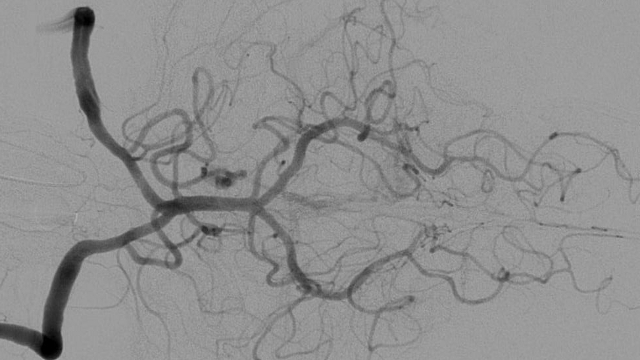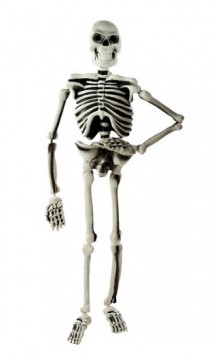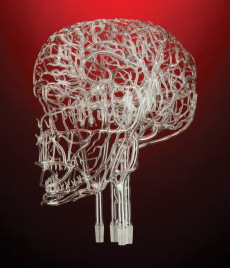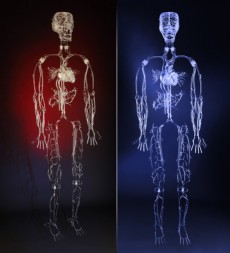

Halloween means time for gore! Blood, bones, brains and more! Severed fingers, severed toes, eyeballs and organs galore!
But how accurate are all these loose bits of human anatomy in our front yards, costumes and punch bowls? Can we use that skeleton in the corner to bone up for a biology exam--or are we missing out on a tremendous opportunity to learn medical science?
Perhaps we need to look past the Halloween superstores for a vendor who truly appreciates the beautiful complexity of the human body’s inner workings. Farlow's Scientific Glassblowing, located in Grass Valley in the Sierra foothills, is the perfect alternative source for holiday decorations. Their anatomical glass sculptures are exquisitely accurate, based on measurements from real cadavers. The brain model, pictured below, is so beautiful you may have to restrain any zombies at your party from taking a bite.
(Despite its recognizable shape, the model contains no gray matter at all--it's exclusively made up of arteries. They map out the cranial organ so nicely because the brain demands a massive amount of blood--15% of the total cardiac output.)

Of course, these glass models have a more serious purpose than mere festivity. "Ideal for stent placement testing and tortuous testing as well as catheter testing," Farlow's proudly proclaims. "These models may be customized with aneurysms." Well! Who wouldn't want that?
